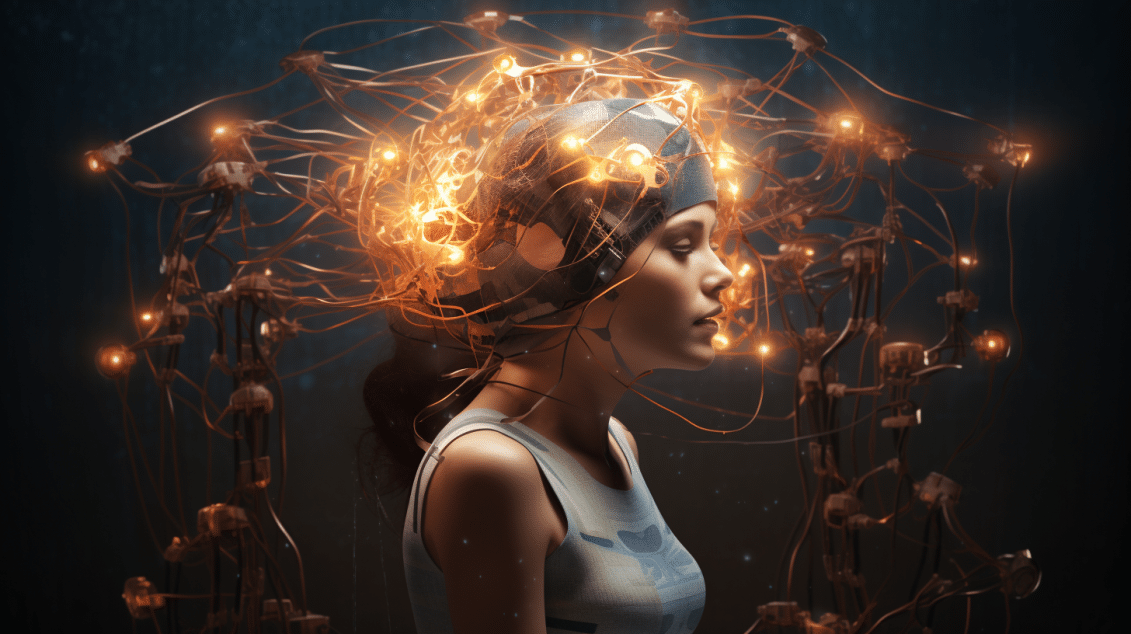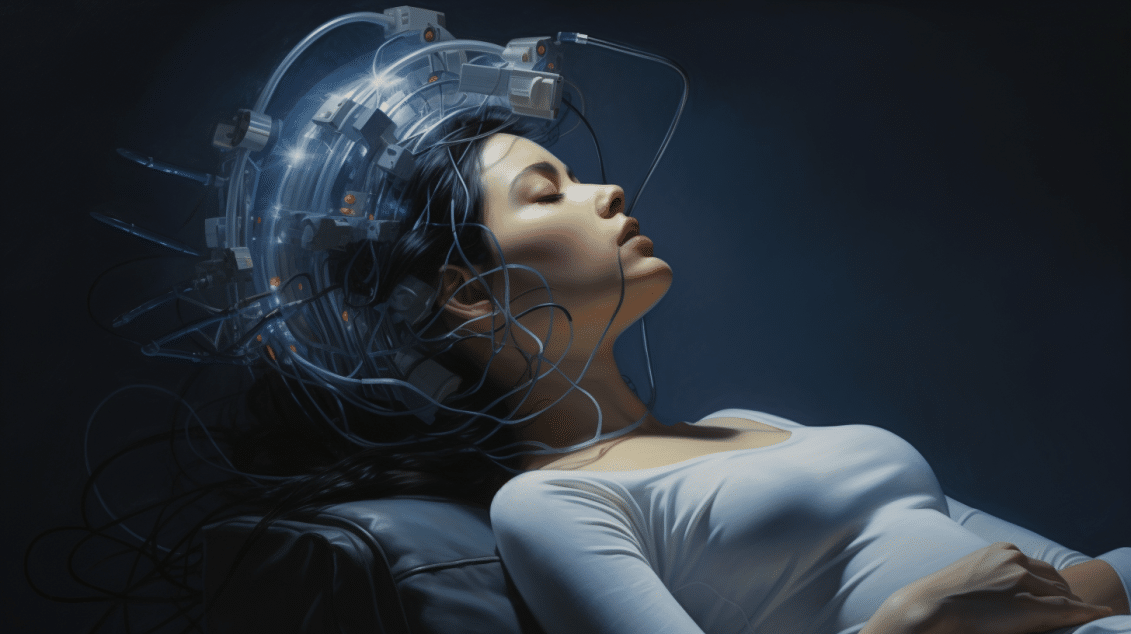Tardive dyskinesia is a disorder caused by taking certain psychiatric drugs long-term.
It involves uncontrollable body movements that can severely impact a person’s quality of life.
Deep brain stimulation is a promising new treatment option for severe, drug-resistant tardive dyskinesia.
Key Facts:
- Tardive dyskinesia causes involuntary, repetitive body movements, often of the face, lips, and tongue. It is a side effect of taking certain antipsychotic or gastrointestinal medications long-term.
- Symptoms can range from mild to severe. Severe tardive dyskinesia can significantly impair function and quality of life.
- Treatment options include reducing or changing medications, but medications often provide little relief, especially in severe cases.
- Deep brain stimulation (DBS) is a surgical procedure involving an implanted device that sends electrical signals to the brain. It has shown promise in treating Parkinson’s disease and other movement disorders.
- Small studies show DBS targeting two specific brain regions – the subthalamic nucleus and internal globus pallidus – can effectively reduce symptoms and improve quality of life in many tardive dyskinesia patients.
- DBS can provide long-lasting benefits, but does carry surgical risks. It is considered when symptoms are severe and not controlled well with medications. More research is still needed.
Source: J Clin Med 2023 Mar 12(5)
What is Tardive Dyskinesia?
Tardive dyskinesia is a disorder characterized by involuntary, repetitive body movements.
It typically involves the facial muscles and tongue, causing facial grimacing, lip smacking, tongue thrusting, chewing or blowing motions, and blinking.
Other common movements are twisting, jerking or writhing of the trunk or limbs.
These uncontrollable movements are a side effect of taking certain medications long-term, especially antipsychotic drugs used to treat mental illnesses like schizophrenia.
The condition is also called “tardive” dyskinesia because symptoms can develop after months or years of medication use.
Other drugs that can cause tardive dyskinesia include medications for gastrointestinal issues like metoclopramide and certain antidepressants.
The elderly are at higher risk for developing this medication-induced movement disorder.
Symptoms range from mild to severe. Mild cases may involve subtle facial movements or restlessness.
More severe tardive dyskinesia can involve constant, dramatic movements that significantly impair speech and swallowing.
This makes eating difficult and increases the risk of choking or aspiration.
Severe cases also often cause significant social difficulties due to the abnormal appearance and involuntary vocalizations.
Why Medications Cause TD & Movement Problems
Antipsychotics, antidepressants and other drugs that can cause tardive dyskinesia impact neurotransmitters in the brain.
Neurotransmitters are chemicals that allow brain cells to communicate.
Many psychiatric and gastrointestinal medications block dopamine, an important neurotransmitter involved in regulating movement.
Blocking dopamine helps treat mental illnesses like schizophrenia.
But long-term dopamine blocking disrupts normal signaling between brain regions that coordinate movement.
This is what causes the involuntary muscle contractions and movements of tardive dyskinesia.
The longer someone takes dopamine-blocking medications, the higher their risk of developing tardive dyskinesia.
Those who take high doses are also more likely to be affected.
Treatment Challenges in TD
The main treatment for tardive dyskinesia is reducing or stopping the causative medication.
However, this is often not possible in psychiatric patients who need the medications.
Even when the medication is stopped, the abnormal movements may persist and become permanent.
Medications are available to help reduce symptoms, like:
- Tetrabenazine
- Clonazepam
- Ginkgo biloba
- Amantadine
However, these medications typically provide only mild to moderate relief, especially in severe cases of tardive dyskinesia.
They also often cause problematic side effects.
With no highly effective medications available, new treatments are desperately needed for people disabled by severe tardive dyskinesia.
One promising approach is deep brain stimulation.
Deep Brain Stimulation to Treat Tardive Dyskinesia
Deep brain stimulation (DBS) is a neurosurgical procedure that has shown efficacy against Parkinson’s disease and other movement disorders. It involves surgically implanting electrodes in specific areas deep within the brain.

These electrodes are connected to a neurostimulator device typically implanted under the collarbone.
The neurostimulator sends electrical signals through the electrodes to the targeted areas of the brain.
This electrical stimulation can reduce abnormal activity in brain circuits that control movement.
While DBS requires invasive brain surgery, the stimulation is adjustable and reversible.
The neurostimulator can be programmed and fine-tuned as needed. If ineffective, it can be turned off or removed.
Small studies have shown promising results using DBS to treat severe tardive dyskinesia that is unresponsive to medications.
While risks are involved, it is considered for debilitating tardive dyskinesia since other treatment options are very limited.
Two main brain targets for DBS in tardive dyskinesia have been the subthalamic nucleus and internal globus pallidus.
Treating Tardive Dyskinesia with Subthalamic Nucleus DBS
The subthalamic nucleus is a tiny structure deep within the brain that is part of the basal ganglia system.
This system helps control movement and coordination.
In Parkinson’s disease, the subthalamic nucleus becomes overactive, contributing to tremors and other motor symptoms.
High frequency DBS is thought to disrupt this abnormal activity, leading to symptom improvement.
There is much less research on subthalamic DBS for tardive dyskinesia compared to Parkinson’s disease.
But initial results are promising. Small studies have found that delivering electrical stimulation to the subthalamic nucleus can significantly reduce abnormal involuntary movements from severe tardive dyskinesia.
In one study of 10 tardive dyskinesia patients treated with subthalamic DBS, their scores on a dyskinesia rating scale improved by an average of 88% after one year.
Most maintained this benefit long-term, up to 9 years later.
The subthalamic region is very small and surrounded by other important brain structures.
DBS surgery carries risks like bleeding and infection. But precise targeting can make side effects rare.
Overall, subthalamic DBS shows potential as an effective option for certain tardive dyskinesia cases.
Treating Tardive Dyskinesia Symptoms with Globus Pallidus DBS
Another brain region targeted in DBS for tardive dyskinesia is the internal globus pallidus.
This structure is part of the basal ganglia system like the subthalamic nucleus.
However, it plays a different role in motor control.
In people with Parkinson’s disease, the internal globus pallidus becomes underactive.
DBS is thought to stimulate and normalize the region’s activity.
Similar mechanisms may be at play in tardive dyskinesia. Multiple small studies have shown internal globus pallidus DBS can substantially reduce involuntary movements from severe tardive dyskinesia.
Improvements are often seen rapidly after the device is turned on and can last for years.
One study of 19 tardive dyskinesia patients found their abnormal movement severity, measured on a standard rating scale, improved by 63% on average after globus pallidus DBS.
Benefits remained stable up to 11 years later. Patients also had significant improvements in quality of life.
As with subthalamic DBS, surgical risks exist. But globus pallidus stimulation is considered relatively safe when performed by an experienced neurosurgeon.
It offers lasting relief for many tardive dyskinesia patients when medications fail.
Comparing Subthalamic and Globus Pallidus DBS for Tardive Dyskinesia
There has been more research on globus pallidus DBS compared to subthalamic DBS for tardive dyskinesia.
However, small studies show both brain targets can provide substantial relief from severe symptoms.
Head-to-head comparisons are limited.
But looking at results from the largest studies on each target shows similar effectiveness in improving tardive dyskinesia severity.
On standard symptom rating scales, subthalamic DBS provided 88% average symptom improvement while globus pallidus DBS provided 63% improvement on average.
Both benefits remained stable long-term, up to several years later.
More research is needed directly comparing these two DBS approaches.
Currently, both are considered viable options for debilitating tardive dyskinesia depending on each patient’s unique symptoms and needs.
Hope for Those Suffering from Severe Tardive Dyskinesia
Tardive dyskinesia can be a devastating condition with no good treatment options, especially in severe, persistent cases.
Deep brain stimulation is still investigational but shows real promise in providing relief.
By delivering targeted electrical stimulation to overactive brain circuits, DBS can reduce abnormal involuntary movements and improve quality of life.
While not without risks, it has brought long-awaited hope to tardive dyskinesia patients with severe, uncontrollable symptoms.
Ongoing research is important to refine DBS techniques and better understand how to best help tardive dyskinesia patients.
With continued progress, deep brain stimulation may offer those suffering long-term an effective way to regain control over their bodies and lives.
References
- Study: Deep Brain Stimulation in the Treatment of Tardive Dyskinesia
- Authors: Adrianna Szczakowska et al. (2023)







